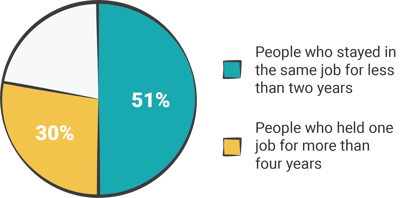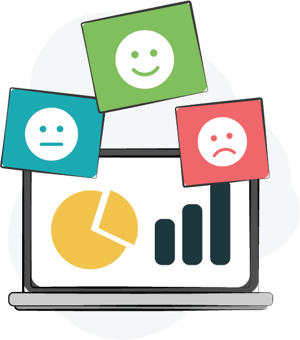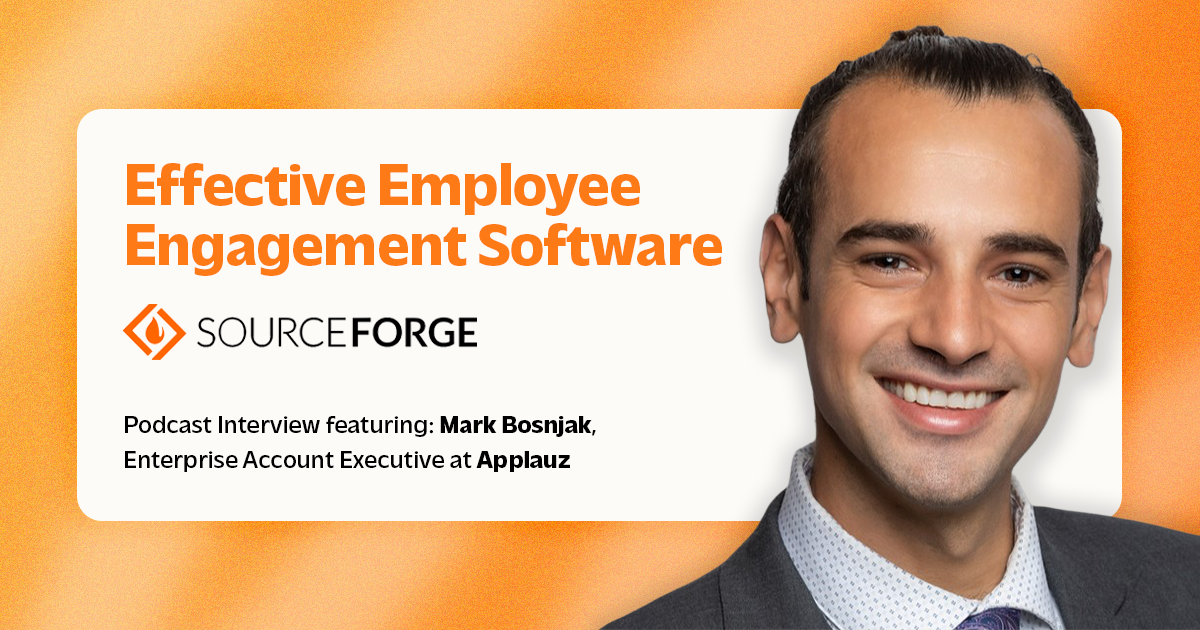 Employee Turnover Statistics
Employee Turnover Statistics
What’s the longest you’ve ever stayed at a job?
Depending on your age, chances are, it’s much less than 10, 15, 20, or even 30 years. Imagine staying at the same company for 30 years!
This idea seems unfathomable to many individuals today. Rewind a couple of decades though—and this was common practice. The main goal of work was stability and security. As we will see in this article...a lot has changed since then.
Basic job turnover statistics
Recent employee turnover statistics support what we all intuitively assume, based on our personal experience and that of our social network: Many people are serial job-hoppers.
 According to an extensive analysis by Workopolis of over 7,000,000 employment-history records from 1990 to the present, the overarching trend suggests “shorter stints at jobs have now become the majority.”
According to an extensive analysis by Workopolis of over 7,000,000 employment-history records from 1990 to the present, the overarching trend suggests “shorter stints at jobs have now become the majority.”
In the past decade, the number of people working for the same organization for more than four years has dramatically dropped. Currently, only 30% of people work for the same employer for more than four years.
If you zoom in on the younger generation, the trend becomes even more apparent: A recent Gallup report on the millennial generation shows that 21% of millennials have changed jobs within the past year, which is more than three times the number of non-millennials who report the same.
Do stats tell the full ‘employee turnover’ story?
These statistics unequivocally show that—yes, people are job-hopping at a higher rate, but the numbers fail to tell us anything about why people leave their jobs, nor anything about the psychological repercussions of continually switching jobs. In short, are people happy?
Interestingly, recent reports suggest these statistics only scratch the surface and can be misleading.
 For instance, a 2016 Forbes report suggests that workers—even Millennials!—“aspire to build a long-lasting career with one company.”
For instance, a 2016 Forbes report suggests that workers—even Millennials!—“aspire to build a long-lasting career with one company.”
Although this rubs up against the current stats, it makes a lot of sense. The desire to fit in, belong, and make an impact is very human and can be a desirable option in our chaotic work market. Not to mention, having to repeat the process of onboarding, training, and proving yourself in a new job every two years sounds exhausting and unsustainable over a career spanning decades.
Another 2019 report by the Atlantic called “Workism is Making Americans Miserable” suggests that, in short, work is the new church. Where Americans used to find identity and meaning in religion and community, they are now driven to find that same identity and purpose at work. However, most jobs and employers fail to fulfill intrinsic personal growth needs.
Building a meaningful work culture
Without going too deep down the philosophy rabbit hole, the primary takeaway should be that although turnover statistics are disturbingly high, these surface numbers should not color overarching attitudes toward your workforce.
Avoid painting everyone with the same brush.
Assuming all employees are job hoppers and treating them as a short-term asset will only succeed in perpetuating the very thing organizations are trying to avoid—turnover. And ultimately, this mindset, further drives what economists are calling the “quitting economy.”
Our professional lives take up the vast majority of our time. People want this time investment to benefit not only their professional growth, but also their personal growth. As the two are inextricably linked. If you want to keep turnover low, build a work culture around a distinct central mission and philosophy that drives decision-making, affiliation, and dedication. Ultimately making employees contribute to something greater than just taking home a paycheck.
The great resignation
In the post-pandemic climate, employee retention takes on a whole new meaning. In the current work economy, employees have more options than ever before. The pandemic has created many remote jobs and completely changed the way we think about work.
Meanwhile, technology has made it easier for people to acquire new skills and work from anywhere, effectively shifting power into the workers' hands. But most notably, in uprooting our lives, the pandemic has urged us to re-evaluate our priorities. For many, emotional well-being, flexibility and autonomy are at the top of the list. As such, employee expectations are high, and tolerance for outdated work practices is low.
In short, the pandemic forced millions of people to reassess their satisfaction with their jobs. Which has spurred what is commonly referred to as the "great resignation."
Instead of going back to the office, millions of American workers have chosen to quit their jobs instead. In April 2021, 2.7% of the workforce quit their jobs. That's the highest the U.S. has seen since 2000. And millions more who have not quit their jobs are considering it.
The implications of this movement are massive for employers. Employee retention strategies will no longer be considered something reactive but rather something that employers will have to work on proactively. We will continue to cover the following sections.
 How to Measure Employee Retention
How to Measure Employee Retention
Employee retention is about enticing and motivating your staff to stay with your company long-term. It’s about building strong relationships—filling workers with a sense of accomplishment, pride, and mutual respect that drives long-term loyalty.
That said, you can’t talk about employee retention without mentioning the opposite phenomenon: employee turnover. Also known as employee attrition or churn. In short, the number of people that leave your company per given period, for whatever reason.
Losing employees is an inevitable part of business, to some degree. However, organizations still strive to keep attrition low and retention as high as possible.
Metrics for Measuring Employee Retention
As you probably imagine, employees leave a place of work for all types of reasons. So gaining a nuanced understanding of employee turnover in your company starts by digging deeper and understanding who is quitting and why.
 Employee happiness
Employee happiness
Keeping your finger on the pulse of employee satisfaction is key to retaining employees. Early intervention is critical when problems and dissatisfaction arise.
As we all know from personal experience, when tension and resentment are left to fester, it’s only a matter of time before someone explodes. Although we don’t generally think of work as a place to let our emotions get the best of us, we are all human, and people experience human emotions like frustration and contempt in their professional lives as much as in their private lives.
That said, it’s incumbent on management to continuously be a barometer for the morale of their team. How you measure employee turnover is up to your own ingenuity.
Voluntary/involuntary turnover rate
As mentioned above, a voluntary departure is different from an involuntary one.
Differentiating and tracking these two metrics can allow HR to pinpoint issues the company is facing.
When employees don't feel fulfilled or impressed by a company's offerings, high voluntary turnover is usually the first symptom. Or they are unfairly compensated or challenged and as a result, have eyes for organizations offering a higher salary and more challenging position.
On the other hand, when terminations are high (involuntary turnover), this suggests flaws in your hiring process. Your hiring filter may not be fine enough. Slipping through are workers that are poorly fit for the role or the company's culture.
 Top talent turnover
Top talent turnover
Being aware of the percentage of people that leave the company per year is a great start. But it tells you nothing about the types of employees that are leaving.
Calculating the top talent turnover rate allows you to understand if you're losing top talent. If the answer is "yes," some deeper digging must be done to get to the bottom of the underlying reason and fix the issue as quickly as possible. Attrition of top performers is sure to impact a business's bottom line negatively.
New employee satisfaction rate
The people walking into your company today may become the top talent of tomorrow. But most won’t blindly offer their loyalty. They first need to feel respected, valued, and welcome.
That said, starting a new job usually sparks a natural boost of energy and enthusiasm. A novel environment faces, and responsibilities can be very stimulating and motivating.
So—if a new employee is feeling disengaged, it’s not a good sign. It means it’s time to question the employee experience your organization is providing and possible gaps and transparency issues in your recruiting process. Once an employee is on the road to employee turnover, early intervention is vital. If you don't step in early, significant problems are waiting down the road.
Retention rate per department/manager
Keeping an eye on the turnover rate for individual managers and departments is wise. A high turnover rate with a specific manager or department can signal an underlying issue that could be affecting the entire team or department, and some investigating on HR’s side is required.
On the other hand, identifying managers with very low turnover rates can also be helpful. You might find some principles for successful employee retention that you could transmit to the rest of your organization.
 How to Calculate Employee Turnover
How to Calculate Employee Turnover
Don’t worry...you don’t need to be a math genius to calculate the employee turnover rate. Calculating various types of turnover rates expressed as a percentage is quite simple and only requires that you have a few solid figures handy.
Calculating your monthly employee turnover rate
To calculate the monthly employee turnover rate, all you need is three numbers:
- The number of active employees at the beginning of the month (B)
- The number of active employees at the end of the month (E)
- The number of employees who left during that month (L)
Then, calculate the average (average) number of employees by adding your beginning and ending workforce and dividing by two.
Finally, you should divide the number of employees who left (L) by your average number (average) of employees and multiply by 100 to get your final turnover percentage.

Pro tip: It's important to note that turnover rates vary significantly from industry to industry, as you'll see later in this article. However, turnover rates should (ideally) be lower than 10%, which is a very healthy turnover rate across the board.
Calculating voluntary resignations
Distinguishing between employees who left for another job or company (i.e. resigned voluntarily) and those who left because of termination or retirement is important.
To calculate this more nuanced employee turnover percentage, you only include voluntary resignations in the "number of employees who left that month."
Ideal employee retention rate
Losing some employees is inevitable, so you’re probably wondering what the average (or “ideal”) retention rate is. In short, what’s the benchmark you should aim to maintain?
Determining a universal benchmark is difficult, as turnover rates vary widely from industry to industry. According to recruiting giant Monster, "Every firm should establish its unique ideal rate."
For example, the hospitality industry is notorious for high turnover rates, according to a 2016 Compensation Force study turnover soared at 28.6 percent; almost triple the "healthy" rate of 10% mentioned earlier. That said, if you're curious to know more about turnover rates in your industry, check out this useful tool from Nobscot.
Regardless of your industry benchmark, organizations should keep these three points in mind when considering retention:
- Strategically planning the flow of talent through the organization.
- Decreasing the flow of top performers out.
- Increasing the flow of top performers in.

 Why Employees Quit
Why Employees Quit
Have you ever asked someone why they voluntarily left a job? Asking this is like opening a can of worms. You’re likely to be on the receiving end of a long list of justifications.
In 2014, Workopolis conducted a poll to get to the bottom of why people leave their jobs. Here is what they found:
- My relationship with my boss – 37%
- I was bored, and unhappy with the work – 29%
- I found a better opportunity – 20%
- Poor fit with the culture/coworkers – 14%
Restrictive management
We've all heard the saying: "People don't leave jobs, they leave managers." For anyone who's dealt with difficult management, it's no surprise that managers and management styles strongly impact employee retention.
Official studies provide evidence for this claim. For example, a study conducted by employee engagement firm TINYpulse found a strong connection between employee job satisfaction and the "freedom to make decisions about how to do their jobs."
In short, rigid management styles and micro-management result in higher dissatisfaction among employees and higher turnover rates.
Moreover, as people continue to be overworked for a significant amount of time, you may observe that some of them start to languish due to exhaustion. Burnout affects employees when they've been pushed far beyond their physical or emotional limits. In other words, burning the midnight oil every day works against us and endangers our capacity to internalize and deal with daily challenges and overcome obstacles.
 Uninspiring work and culture
Uninspiring work and culture
It’s human to feel like you want to be part of a group of like-minded people and contribute to a more significant cause that aligns with your own beliefs and personality.
For example, someone who is a firm believer and proponent of environmental sustainability would feel proud to work for a company with similar values that makes decisions based on low carbon footprint and environmental sustainability.
Recent studies support this claim. A TinyPulse survey found that uninspiring company culture is an active contributor to employee churn. According to the study, “employees who give their work culture low marks are nearly 15% more likely to think about a new job than their counterparts.”
Little opportunity for career advancement
Many top-performing employees value future career opportunities within their company. They'll surely feel like their career is stalling if there's no talk of promotion once they've proven themselves and feel like they deserve consideration for advancement.
Over 70% of "high-turnover-risk" employees state that they want to leave their employer because they aren't given a chance to grow in the current position they occupy (Willis Towers Watson). The moral of this story? Depriving your star workers of advancement opportunities is a sure way to lose them, no two ways about it.
Post-pandemic: Why employees are considering leaving
Fast forward seven years, the world of work and the job market has changed dramatically. Of course, a good relationship with your manager is critical, and so is enjoying the work you do. However, in recent years, some other concerns have taken center stage for employees.
Achievers conducted a study to get to the bottom of why workers are considering leaving their current jobs in 2021. Here is what the study found.
- Better compensation and benefits as the top reasons employees consider leaving an organization. -36%
- Better work-life balance. – 25%
- Not being recognized for their work. – 16%
- To find an employer with a better corporate culture. – 8%
They also surveyed employees who are satisfied with their current employers to find out what compels employees to stay with their current employers.
Here is what they found as the top reasons employees choose to stay where they are:
- Good work-life balance. – 23%
- They are recognized for their work. – 21%
- They are happy with their compensation and benefits. – 19%
Interestingly, the top two factors that keep employees are "benefits" that can be offered at little cost to the company.
Providing employees with more work-life balance is not a costly or tangible perk. It simply requires that your company re-imagine its work models and the basic structure of the workday in a way that gives more flexibility and autonomy. This can be as simple as letting employees decide where and when they get their work done.
In addition, sharing more regular recognition and appreciation for employees is also an extremely cost-effective initiative. It can entail setting up a Peer-to-Peer recognition program or simply asking managers to share recognition more regularly with their employees.
Cost of employee turnover
Every time an employee is hired or replaced, your organization takes a financial hit.
It is essential to avoid these situations because, according to the Center for American Progress, the cost of employee turnover on an employee earning $ 30,000-50,000 represents 20% of their annual salary and can be extended up to 200% for senior management.
 The cost of losing employees extends beyond financial implications, too. When a team member is lost, group morale can take a severe hit, especially if employment ends in termination. Terminating a worker's employment can cause a wave of anxiety among the remaining team members.
The cost of losing employees extends beyond financial implications, too. When a team member is lost, group morale can take a severe hit, especially if employment ends in termination. Terminating a worker's employment can cause a wave of anxiety among the remaining team members.
On the other hand, if an employee left for greener pastures, this can also affect morale differently, persuading other team members to take the plunge and quit as well.
 Employee Retention Strategies
Employee Retention Strategies
In any business, there are always competing priorities. Recruiting and hiring are expensive and ultimately take up the majority of Human Resources time and resources. Consequently, employee retention takes a back seat.
How does this affect the business and its people?
- Benefits and perks for attracting candidates are given priority.
- Retention efforts are only considered if there is an obvious problem, like high turnover or low morale.
- Hurried initiatives are put in place without exploring the root of the issue or asking employees if they would want to use this program.
Retention can be proactive, not reactive
The problem with this approach is that it's reactive. But it doesn't have to be this way. You can proactively work on creating lasting value for your employees as well.
If your business wants to build a strong Employee Value Proposition (EVP) that not only attracts but retains employees, it must prioritize strategic employee retention.
This means your business must think carefully about the ideas it chooses to implement.
In short, being strategic with retention means recognizing how your offering fits into the bigger picture of your employees' needs at every stage of their life cycle. And also the larger vision for your employer brand.
Your company’s EVP
To kick-start your strategy, you must first look at your company’s current Employee Value Proposition (EVP).
Remember: Your company’s EVP includes both tangible and intangible benefits employees receive when working for your business.
You can classify these benefits by breaking them down into five broad categories:
- Compensation (i.e. salary, pay raises, bonuses, profit sharing)
- Core Benefits (i.e. health care, vacation, time off, remote work)
- Work environment (i.e. Work-life balance, autonomy, teamwork, psychological safety)
- Career (i.e. promotions, training, coaching, mentorship)
- Culture (i.e. Mission, values, prestige, social responsibility)
Whether tangible or intangible, each type of benefit plays a unique role in the employee lifecycle. In other words, what’s important to a new employee is not necessarily what’s important to an employee with a tenure of 5 years.
To tackle retention systematically, documenting your EVP is only the first step. You have to consider your EVP from the perspective of the entire employee lifecycle -- in the short, medium, and long term.
Short-Term: The things that attract talent
Short-term factors are the baseline value you offer to workers. These benefits serve as the foundation of your EVP. They will help attract candidates but also keep them for the short term.
For example, a 2015 study showed organizations with a strong onboarding process improve new hire retention by 82% and productivity by more than 70%.
Short-term retention factors include:
- Competitive salary
- Modern office in a central neighborhood
- Flexible hours and remote options
- Basic benefits (e.g. health plan)
- Attractive vacation policy (e.g. 3-weeks paid vacation)
- Fun perks like free cereal and game rooms
- Social events (e.g. yearly offsite)
- Onboarding package (e.g. company swag, gifts, etc.)
These offerings create attractive packaging. They are the things you want to mention in your job postings to draw people in. And they are surely appreciated by the current staff as well. There are, however, many other factors that can create loyalty as time progresses
Medium-Term: The things that give people a reason to stay
Think about working from an office in a trendy neighborhood or having a competitive salary. It must be nice! Right?
Yet, suppose your boss is rude, or your coworkers are always spreading negative gossip. In that case, you will likely develop a negative feeling about your job regardless of the office's location or the size of your paycheck.
In other words, our daily experiences shape the way we feel about our work. That's why in the medium-term intangible factors start to come into play as well.
Retention factors in the medium term include things like:
- Yearly salary adjustments
- Strong coworker relationships
- Programs to help employees feel appreciated and recognized. (i.e. years of service program, recognition programs)
- Mental wellness programs (access to psychological services or mental health resources)
- Skill development training, learning stipends, feeling challenged
- Advanced benefits (e.g., childcare, retirement matching, 401k)
- Supportive managers and psychologically safe environments
- Mentorship opportunities
These programs and benefits drive loyalty for a short time, for a few years. So what drives long-term commitment, the kind that lasts for decades or more. Businesses must offer long-term value and rewards to employees to retain them in the long run.
Long-Term: The factors that drive long-term commitment
Certain benefits are highly effective short-term motivators. For example, a bi-weekly salary, access to a health plan, and working on challenging projects.
In reality, these are essential benefits. In short, many companies offer them. As such, these benefits aren’t as effective in sparking the type of motivation that compels people to work somewhere long-term.
Take a moment to consider: What does your company offer as a long-term benefit for its employees?
Retention factors in the long-term include things like:
- Professional career growth (official promotions) or role-switching
- Tenure-based bonuses
- Performance-based bonuses
- Tenure-based vacation, sabbaticals
- Equity in the business (e.g., stock options)
- Collective re-set weeks (mandated office closing)
- Inspiring mission
- Social action or contributions to the community
- Values alignment
- A strong belief in the product and future success of the business
As you can see, these factors can be intangible factors such as the prestige of your brand and an inspiring mission. Or more tangible benefits like a tenure-based sabbatical.
Bottom line: employees will be more likely to stay long-term if they have a vested interest in the company. Or if they are guaranteed long-term rewards they can strive for and look forward to.
Auditing your current offering
We have now explained how the elements of your EVP can be used to create short, medium, and long-term value for your employees.
The next step is to do an audit of your company’s offering.
You can start this exercise on paper or a shared digital document. Simply create a table with three columns “short-term, medium-term and long-term.” Look at the elements that make up a company’s EVP (e.g. compensation, benefits, work environment, etc.). Under each column, write what your company offers for each.
.png?width=620&name=image%20(28).png)
Identifying the gaps
Once you are done filling out each column, what do you notice?
- Is one column sparse?
- Do some columns seem to have more content than others?
For example, does your company seem to offer a lot of short-term value with attractive per but little value in the long-term?
The gaps should naturally jump out at you.
That said, if you've been in your company for a while, you might already be well aware of the gaps. In other words, you know what your EVP is missing. You've already collected this feedback from various channels, such as employee complaints and exit interviews. So this exercise may seem unnecessary to you.
However, we strongly recommend putting everything your company offers on paper. It's a great first step to planning your strategy, and when do you ever have a global view of your core EVP?
 Tools for Employee Retention
Tools for Employee Retention
No matter the engagement and retention program you develop, it should be supported by technology with helpful employee retention tools.
A variety of cloud-based friendly software exists to address solutions for various HR problems. For example, applicant tracking software like JazzHR, ClearCompany, and Breezy HR helps automate and streamline the hiring process for recruiters.
What about software that helps once an employee is onboard? When it comes to supporting employee retention initiatives, a whole other type of software solution is needed: One that works to foster communication, rewards, and recognition.
 Rewards and recognition software
Rewards and recognition software
Cloud-based and cost-effective software like Applauz Recognition provides essential HR tools to help engage, celebrate, and reward, as well as motivate your workforce in a personalized way.
Software like Applauz offers participants access to a Marketplace where they can be rewarded with tangible rewards and name-brand goods.
Software like this makes the administration and daily operation of employee retention and engagement programs easy to access and manage while making it automated and push-button easy to implement.
Performance tracking software
Employees want their jobs to advance their personal and professional growth. Putting in place a performance evaluation tool is a significant first step to bringing this engagement initiative to life.
In short, managers must help employees understand what they are working towards. This applies to both the short and long-term goals.
Holding people accountable for precise goals gives them a sense of ownership and empowers them. Setting a benchmark also challenges them to improve their skills and abilities.
Several solutions exist to help communicate goals and transparently monitor their progress, not only across a team but the entire organization.
For example, tools like Lattice, Betterworks, BambooHr, and 15five are common. These tools help managers establish performance benchmarks, track goals, and help employees get full transparency on the goals they are working towards.
An employee survey tool to measure satisfaction
If you want to put the employee voice at the forefront, it's necessary to keep the company's finger on the pulse of workforce satisfaction. In other words, setting your company up for success means giving employees a clear voice with the right tools. By tuning into employee sentiments, your company can prevent needless turnover. And most importantly, keep the talent your business needs to thrive.
For example, a Pulse Survey tool features questions that are pre-set to measure critical areas of engagement. These tools also offer detailed reporting features. In short, the application builds dashboards and interprets the data, so you can move past the data and take action.
Pro Tip: With the help of software like Applauz, you can administer Pulse Surveys and keep your finger on the pulse of how your employees are feeling.
Other digital survey tools like TinyPulse and Qualtrics are popular for measuring employee engagement and happiness.
.jpg) Final Thoughts
Final Thoughts
Employee loyalty is not given; it must be earned.
However, many companies are not willing to put effort and resources into driving employee loyalty. These decisions are often fueled by grim and misunderstood job-hopping statistics. In short, companies think—"why bother," they will most likely leave soon.
Ultimately, ignoring employee retention is narrow-sighted, as management often forgets that loyal employees are among the best assets for a successful company. They bring momentum, stability, growth, and productivity to an organization. And more importantly, loyal employees serve as prime examples of your company's values and overall employment success.
 Applauz on SourceForge: Effective Employee Engagement Software
Applauz on SourceForge: Effective Employee Engagement Software







